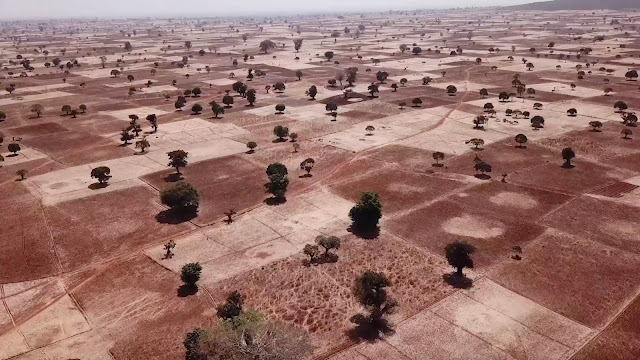From the film: Over the past century, farming and the needs of a growing population have replaced nearly all of Ethiopia’s old-growth forests with agricultural fields. This film tells the story of the country’s church forests—pockets of lush biodiversity, protected by hundreds of churches, that are scattered like emerald pearls across a brown sea of farm fields.
A cautionary tale to the rest of the world, especially the Amazon, of the effects of deforestation for growing crops and livestock.
There's a saying in the Ethiopian Church: for a church to be a church, it needs to be surrounded by a forest-the forest representing the Garden of Eden.

Kieran Dodds
Murals adorn the interiors dating back 700-900 years ago.These churches represent one of the earliest examples of the Christian church. From Encyclopedia Britannica:
Ethiopian Orthodox Tewahedo Church, autocephalous (meaning the church appoints its own head, not subject to the authority of an external patriarch or archbishop) Oriental Orthodox church in Ethiopia. Headquarters are in Addis Ababa, the country’s capital.
Tradition holds that Ethiopia was first evangelized by St. Matthew and St. Bartholomew in the 1st century ce, and the first Ethiopian convert is thought to have been the eunuch in Jerusalem mentioned in The Acts of the Apostles (8:27–40). Ethiopia was further Christianized in the 4th century ce by two men (likely brothers) from Tyre—St. Frumentius, later consecrated the first Ethiopian bishop, and Aedesius. They won the confidence of the king at Aksum (a powerful kingdom in northern Ethiopia) and were allowed to evangelize. The succeeding king, Ezana, was baptized by Frumentius, and Christianity was made the state religion. Toward the end of the 5th century, nine monks from Syria are said to have brought monasticism to Ethiopia and encouraged the translation of the Scriptures into the Geʿez language.
The Ethiopian church followed the Coptic (Egyptian) church (now called the Coptic Orthodox Church of Alexandria) in rejecting the Christological decision issued by the Council of Chalcedon in 451 ce that the human and divine natures of Jesus Christ were equally present in one person without commingling. Opposed to this dyophysitism, or two-nature doctrine, the Coptic and Ethiopian churches held that the human and divine natures were equally present through the mystery of the Incarnation within a single nature. This position—called miaphysitism, or single-nature doctrine—was interpreted by the Roman and Greek churches as a heresy called monophysitism, the belief that Christ had only one nature, which was divine. The Ethiopian church included into its name the word tewahedo, a Geʿez word meaning “unity” and expressing the church’s miaphysite belief. Like other so-called non-Chalcedonian (also referred to as Oriental Orthodox) churches, it was cut off from dialogue with the Roman Catholic and Eastern Orthodox churches until the mid-20th century, when many of the Christological disputes that arose from Chalcedon were resolved through ecumenical dialogue.

Two women walk towards Betre Mariam church in the forests of the Zege peninsula, near Lake Tana.


No comments:
Post a Comment